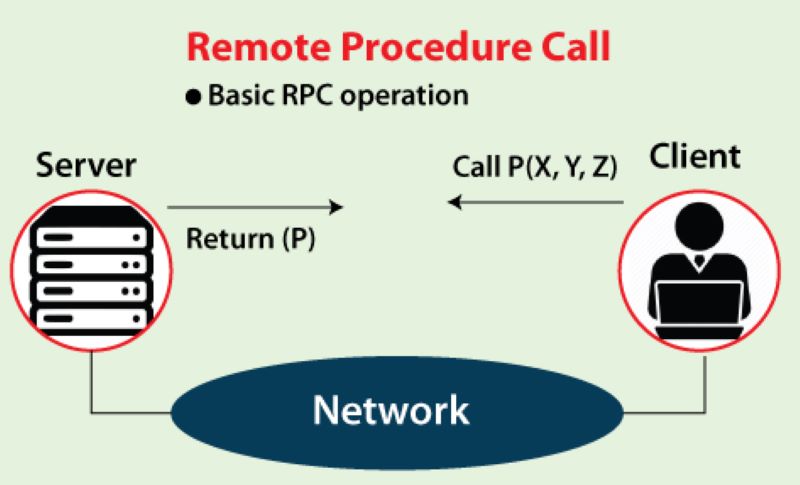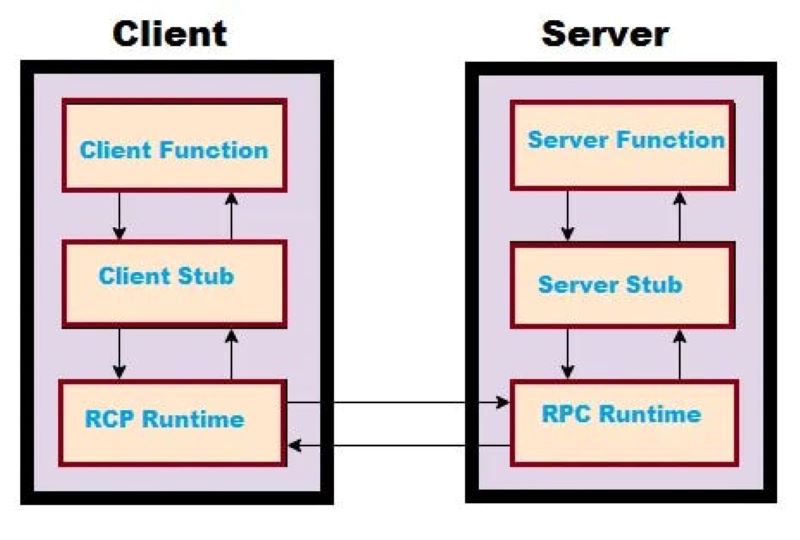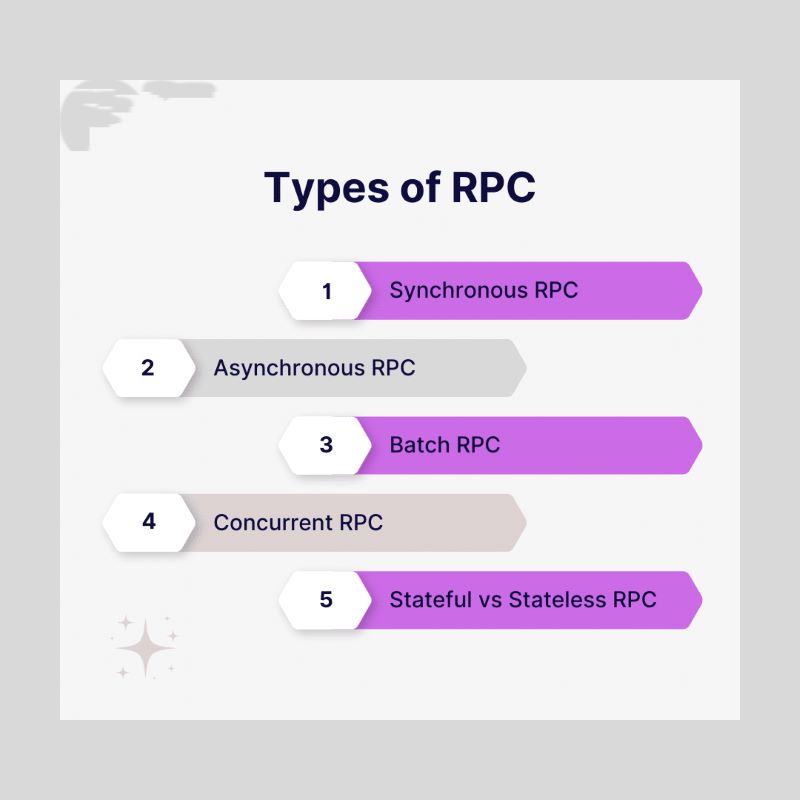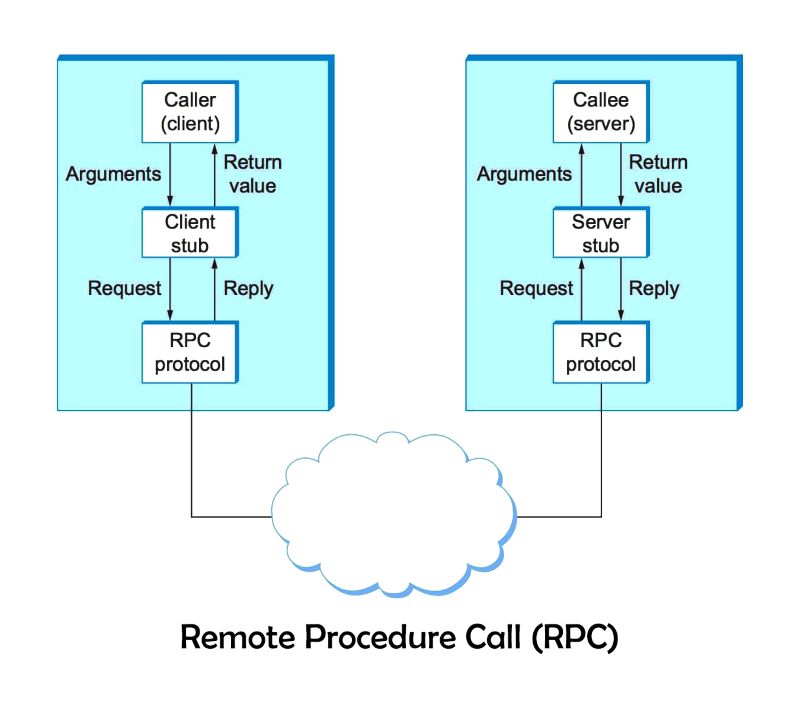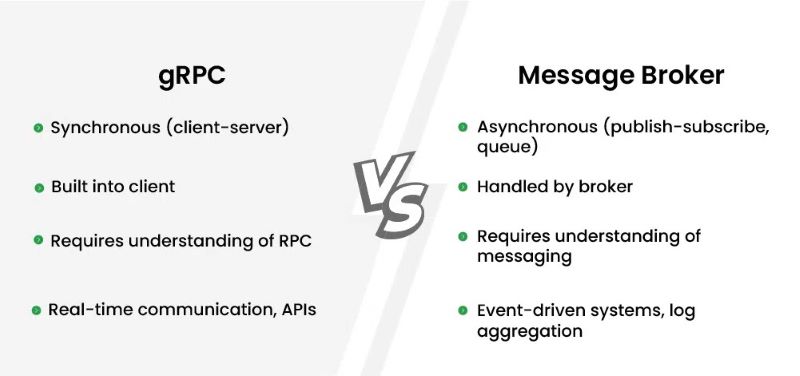Remote Procedure Call (RPC) is a vital concept in distributed computing that simplifies interaction between networked systems by allowing a program on one machine to execute procedures on another. This article delves into the definition, types, advantages, and disadvantages of RPC, and provides a detailed comparison with Messaging to help you choose the best approach for your system’s needs.
Definition of Remote Procedure Call
Remote Procedure Call (RPC) is a protocol in computer programming that allows a program (client) to call a procedure or method on another computer (server) as if it were part of the program running on the client’s machine.
RPC simplifies interaction between distributed applications by abstracting the complex details of data transmission over a network.
Types of Remote Procedure Call
- Synchronous RPC: In this model, the client sends a request and waits for a response from the server before continuing with other tasks. It ensures execution order but may result in longer wait times for the client.
- Asynchronous RPC: The client sends a request and does not wait for an immediate response. Instead, the client can continue performing other tasks and receive the response from the server after processing is complete. This model improves performance but requires a mechanism to handle responses when they arrive.
- One-way RPC: The client sends a request to the server without expecting any response. It is typically used for tasks that do not require acknowledgment of success or failure.
- Two-way RPC: The client sends a request to the server and expects a response in return. This is the most common type of RPC, suitable for requests where the client needs the result of the operation.
How RPC Works
- Client Stub Call: The client calls the RPC stub as if calling a local procedure. The procedure parameters are prepared for sending.
- Marshalling and Sending Messages: The client packages the procedure parameters (marshalling) into a message. A system call is then made to send this message to the remote server.
- Sending Message Over the Network: The client’s local operating system sends the message over the network to the remote server.
- Server Stub and Parameter Unpacking: The server receives the message and unpacks the procedure parameters from the message. The server stub then executes the procedure on the server.
- Execution and Sending Results: Once the procedure is complete, the server sends the result back to the client through the transport layers.
- Client Stub Receives Results: The client receives the result from the message, unpacks the message, and returns the result to the procedure caller.
Advantages and Disadvantages of Remote Procedure Call (RPC)
Advantages of RPC
Simplified Programming
RPC provides an interface similar to local procedure calls, making it easy for developers to perform remote calls without worrying about network details. By abstracting the complexity of network communication, RPC allows developers to focus on application logic rather than network issues.
Scalability
- Easy to Modify: Once a system is deployed, you can switch between local and remote calls without changing the core source code.
- Supports Distribution: RPC facilitates the development of distributed systems by enabling applications to communicate with each other effortlessly.
Flexibility
RPC allows you to transition services from local to remote without needing to adjust the program’s structure.
Disadvantages of RPC
Latency and Performance
Data transmission over the network between the caller and receiver can introduce higher latency compared to local calls. This can impact application performance, especially when multiple RPC calls are made consecutively. Increasing the number of RPC calls can lead to bottlenecks due to constant querying and overall increased latency.
Data Conversion and Verification
- Serialization and Deserialization: Parameters and returned data must be converted (serialized) and restored (deserialized), which adds complexity and may lead to errors if not handled correctly.
- Type Checking: Ensuring type compatibility between client and server can be risky, especially with differences in programming languages or data types.
Security and Synchronization
RPC requires security mechanisms like encryption and digital signatures to protect data, which adds complexity and can reduce performance. Differences in time synchronization, operating systems, and programming languages between systems can make it challenging to synchronize and standardize data.
Complexity in Distributed Processing
By hiding the distributed nature of RPC from the programming perspective, it may make it harder for developers to address the physical and network-related challenges of distributed systems.
Comparison of RPC and Messaging
Concept and Programming Interface
- RPC (Remote Procedure Call): Operates similarly to local function calls but occurs over a network. It provides a familiar programming interface and usually operates synchronously, requiring the client to wait for a response from the server. This makes RPC easy to understand but can result in higher latency.
- Messaging: Uses messages to communicate between system components. It offers higher flexibility, especially in asynchronous models, and supports various types of communication. Messaging systems can achieve lower latency due to message queuing.
Synchronization and Latency
- RPC: Typically synchronous, meaning the caller must wait for a response from the server, which can lead to higher latency, especially over a network.
- Messaging: Can be configured as synchronous or asynchronous, allowing for improved latency and optimized performance.
Data Type Checking and Security
- RPC: Requires data type checks between the client and server, along with security measures like encryption and digital signatures to protect data transmitted over the network.
- Messaging: Does not require strict data type checking but maintains security through message encryption and source authentication, simplifying the communication process.
Scalability and Flexibility
- RPC: May face limitations in scalability due to its reliance on remote call structure and tends to be less flexible, requiring precise call structures.
- Messaging: Excels in scalability due to message queuing and distribution systems, offering greater flexibility with asynchronous communication models.
Error Management and Maintenance
- RPC: Error management can be more complex, requiring detailed exception handling and potentially difficult updates to call structures if API changes occur.
- Messaging: Easier error management through retry mechanisms and message queues, and simpler maintenance due to message decoupling and queuing systems.
Deployment Techniques
- RPC: Often implemented through libraries and protocols such as HTTP and gRPC.
- Messaging: Implemented via message queuing systems like RabbitMQ or Kafka, and is preferred for large distributed systems that require flexible and scalable communication.
RPC is suitable for remote calls similar to local function calls, providing a straightforward approach but may struggle with scalability and error management. Messaging offers greater flexibility and scalability, making it ideal for large systems requiring asynchronous communication and efficient error handling.
Remote Procedure Call (RPC) remains a powerful tool for simplifying remote interactions, providing a familiar interface for developers and supporting distributed system development. Its strengths lie in its simplicity and ease of use, but it also comes with challenges such as higher latency and complexity in error management.
Messaging, on the other hand, offers greater flexibility and scalability, making it an attractive option for large, asynchronous systems. Understanding the nuances of RPC and Messaging will enable you to make an informed decision based on your system’s requirements, ensuring efficient communication and robust performance.
For further insights and updates on technology and programming concepts, don’t forget to follow Dynamic Crypto Network for the latest articles and expert analysis.
